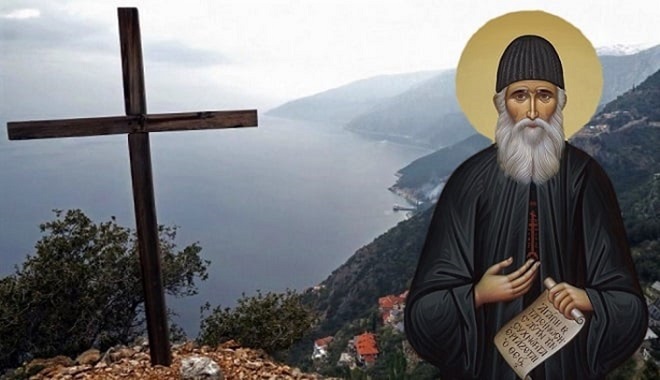When people are contaminated and when they’re purified
25 July 2023Saint Païsios the Athonite used to say: ‘You know the pitcher? The top part is clear, but towards the bottom, where it touches the earth, there’s a residue. People are like that, as well: the more they’re attached to the earth and earthly things, the more they’re contaminated; but when they’re raised to heavenly things, they’re purified’.
It’s true that almost all the Fathers of the Church, ancient and modern, use examples from the tangible world in order to hep us understand spiritual realities. This is because very often what’s valid in the tangible and material world also applies, to a certain extent, to the spiritual sphere. Saint Porfyrios Kavsokalyvitis, for example, talked about human love, which makes people turn to and think unceasingly about the object of their love. He wanted to say that people should turn to God ‘with all their soul, heart and mind’. Saint Païsios says the same thing in the above extract. He uses an ordinary example, a pitcher of water, in order to remind us of an apt truth of the spiritual life: that whatever we become attached to, whatever we’re involved with and absorbed in, will bring the commensurate consequences. People are attached to earthly, material things? They’ll start to be contaminated. They’re attached to heavenly and spiritual things? Their soul will begin to be purified, which means that there’ll be room in their heart for God’s grace to dwell- ‘blessed are the pure in heart, for they will see God’.

And the example of the pitcher is apposite: if the bottom comes into contact with the earth, mold is formed, whereas the upper part remains clear. In his own way, the saint renders what the word of God and Church tradition declare: ‘Set your mind on, seek, the things above, not things on earth’ (Col. 3, 2). This is because, being created in his ‘image and likeness’, it’s in our nature to feel a constant, loving pull towards God: ‘You shall love the Lord your God with all your soul, with all your heart, with all your mind and with all your strength’. Beings who were created ‘to repeat’ their God (Saint Sophrony the Athonite), who have come forth from him, who are sustained in their existence by him, and are drawn to him, naturally keep their spiritual eyes constantly and unwaveringly trained on their root and source: ‘My eyes are ever on the Lord’ (Ps. 24, 15). This is why, at the center of the sacraments of the Church, the divine liturgy, the priest proclaims: ‘Let our hearts be on high’; to which the congregation replies: ‘We have them with the Lord’. This is followed by the blessed continuation: ‘Let us give thanks to the Lord’. In other words, it’s not possible for people, especially those considered to be of the faith, to be able to live spiritually, to exist spiritually as members of Christ, unless their hearts feel compelled to be where the Lord is.
So, when the cares of this world, in particular its temptations and diversions, distract Christians from gazing on the face of Christ, that’s when spiritual mold, that is, wickedness and sin, begins to develop. An environment develops which is loathsome for the soul, and the devil begins to gain the upper hand, with all that his presence entails: anxiety, sadness, turmoil, disorder and hell. Of course, Saint Sophrony, doesn’t mean that Christians who live in the outside world, or even monastics, shouldn’t be concerned with the things of this world. Of necessity, since we have bodies, we have to take care of some requirements. What he points out, however, is that it’s desirable not to become too attached to them. We must not become entirely absorbed in them, as are the atheists, who have expunged God from their life. How is this achieved? Only when believers are characterized by true faith, which opens their eyes for them so that they can see everything in the world ‘in God’. Saint Paul notes that: ‘In him we live and move and have our being’, thus conveying the very important and profound reality that ‘God gives life and breath and all things’, to people and to the whole of creation.
It follows, then, that, when the faithful learn, through their ascetic efforts, to see the world, themselves, other people and everything in this double way, they’ll see what’s most obvious: the presence of the Creator in all things made and created. They’ll then find themselves at the neck of the pitcher, keeping in mind the ‘things above’, engaging ceaselessly with their Father, feeling like children in their mother’s arms. Naturally, there’s no room there for ‘mold’ to grow because the light of the face of the Lord comes as ‘consuming fire’, burning up every passion and every wicked motion of the soul. In this dynamic condition, the faithful confirm that ‘here we have no lasting city, but we seek the city which is to come’ and they become the dwelling-place of God himself, a position from which they strive not to fall. But even if they do fall on occasion, they immediately take up the struggle to return, that is the struggle of repentance, so that they can regain what they’ve felt and known to be the essence of their life itself: that life without Christ is unbearable.






